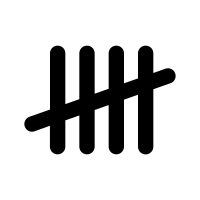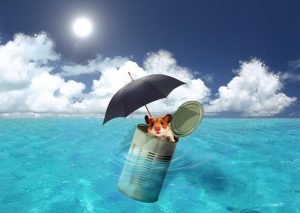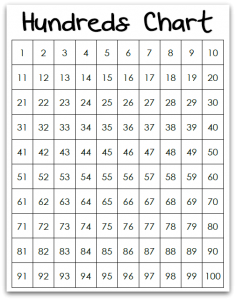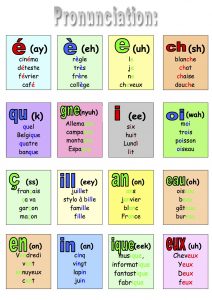The following activities are optional and are meant to be done at your own pace. You may choose to share your assignments with me but it is not expected that you e-mail me these assignments.
Activity #1: Go for a walk. Enjoy the fresh air. Keep your eyes open for anything interesting. Imagine you’re a bird looking down or an ant looking up. Pay attention to the path you take.
Fais une promenade. Amuse-toi bien dans l’air frais. Garde tes yeux ouverts aux affaires intéressants. Imagine que tu es un oiseau en regardant le terre d’en haut ou un fourmi d’en bas. Fais attention à ton chemin.
Activity #2: Go for another walk. Try to follow the same path as before. When you get back, recreate the path you took. You can use your toys, you can draw or you can use loose parts from nature to map the route. Include all the important landmarks. Did you pass a park? Store? Gas station? Where are the mountains in relationship to where you started?
Fais une autre promenade. Essaie de suivre le même chemin. Quand tu es de retour, recrée ton chemin. Tu peux utiliser les jouets, la nature ou dessiner pour montrer ton chemin. Inclus tous les points de repères. As-tu passé un parc? Un magasin? Un station-essence? Où sont les montagnes?
Activity #3: Go for a walk or sit in your backyard. Look for something living (ie insect, animal, plant). Observe for at least 5 minutes before drawing. Find a quiet spot where you can continue to observe and do a dessin scientifique/scientific drawing. Remember that this means your drawing is as précis/accurate as possible. Label the parts of your drawing using vocabulary in French.
Fais une autre promenade ou va dans ton cour. Cherche quelque choses vivant. L’observe pendant au moins 5 minutes avant de dessiner. Trouve quelque part tranquille pour observer et fais un dessin scientifique. Ça veut dire que ton dessin est précis. Etiquette ton dessin.
Activity #4: Go for a walk or sit in your backyard. Choose an inanimate object (ie house, playground, water fountain etc). Observe for at least 5 minutes before drawing. Find a quiet spot where you can continue to observe and do a dessin scientifique/scientific drawing. Remember that this means your drawing is as précis/accurate as possible. Label the parts of your drawing using vocabulary in French.
Fais une autre promenade ou va dans ton cour. Cherche quelque choses non vivant. L’observe pendant au moins 5 minutes avant de dessiner. Trouve quelque part tranquille pour observer et fais un dessin scientifique. Ça veut dire que ton dessin est précis. Etiquette ton dessin.
Activity #5: Go for a walk. Count and record how many people you see on your walk (practice tallying in groups of 5).
Fais une promenade. Compte combien de personnes que tu vois. 
Activity #6: Go for a walk. Make a list of all of the animals you see. Your list can be written, drawn, tallied or graphed.
Fais une promenade. Fais une liste de tous les animaux que tu vois. Ta liste peut-être dessiné, écrits ou une graphique.
Activity #7: Go for a walk. Write down all of the different types of buildings that you see (ex. Apartments, houses, library, post office, Metrotown, 7/11, gas station, fire hall etc). Keep your list for activity 8.
Fais une promenade. Écris tous les édifices que tu vois. Garde ta liste pour activité 8.
Activity #8: Compare your list from activity 7 with the following document. Did you come across anything not on this list? Did you miss anything from the list? If so, why do you think that is?
communitygamesFrench2016Revised-dragged
Order the pictures from most to least important. Was this difficult to do? How did you decide?
Compare ta liste d’activité 7 avec le document ci-joint. As-tu trouvé quelque chose qui n’est pas sur la liste? Y-a-t-il quelque choses sur la liste que tu n’as pas vu? Pourquoi?
Project #1: Think about what you noticed on your neighbourhood walks and reflect on the question “what makes Burnaby special?”. Make a “map” of Burnaby by drawing all of these essential services, buildings and/or people. Do not worry about placing these sites accurately on your map but focus on including the important symbols. Label what you have included in your drawing.
For example you may wish to draw the mountains, Metrotown, Burnaby Public Library etc
Réfléchis sur la question “pourquoi Burnaby est-il spécial?” Fais un carte de Burnaby avec tous les édifices et personnes importants. Dessine des symboles (il ne faut pas bien les placés sur ta carte) et étiquette tout ce que tu as choisis d’inclus.
Activity #10: Open the document below and look at the different professions. Pick a profession of your choice. You can pick from the list or you can pick another one that is not on the list. Do some research (with the support of an adult) if necessarily to help you complete the following worksheet. The worksheet can also be done as a written journal entry.
Regarde le document. Choisis un métier. Dessine le métier. Écris tout ce que tu sais sur le métier de ton choix.
Membres-de-la-communaute 1
ton-métier
Activity #11: This is a picture of Kingsway taken in 1900. How has Kingsway changed in the last 100 years? Look closely. How has the environment changed? Why do you think it has changed?
Voici un photo de Kingsway de l’année 1900. Comment est-ce que Kingsway a changé? Comment l’environnement a-t-il changé? Pourquoi penses-tu que ces changements se sont déroulés?

Project #2: Create your own utopian/ideal neighbourhood. What does this look like? What would you need to include to meet the needs of its citizens? What keeps people safe? What would make them happy? What animals live in your neighbourhood? How are their needs met?
Take your time with this project. Use any materials you can find at home or outside. When you are finished, take a picture and write a paragraph to describe your neighbourhood.
Crée ton propre quartier utopique ou idéal. De quoi a-t-il a l’air? Comment est-ce que ton quartier va répondre aux besoins des citoyens? Comment va-t-il les gardés en sécurité? Qu’est-ce qui va les rendres contents? Quels animaux y habitent? Comments leurs besoins sont-ils satisfaits? Prends ton temps avec ce projet. Tu peux utiliser n’importe quel matériel de l’intérieur ou de l’extérieur. Quand tu as fini, prend un photo et écris un paragraphe pour décrire ton quartier.



